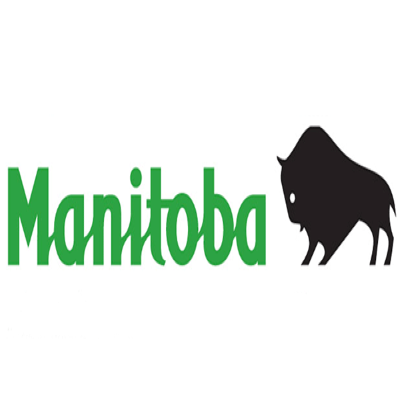forêts
Type of resources
Available actions
Provided by
Formats
Representation types
Update frequencies
status
Resolution
-

This data is a snapshot of Ontario’s forests using the latest available data. Summaries include: * area and volume of forest types * common tree species * other land information such as area by forest region, ecoregions and other land classes Visual display: * The forest information presented in this data is also available in interactive maps and charts * Maps and charts allow you to view the data in finer detail and allows for comparisons between forest types and regions You can also view: * [Forest resources of Ontario 2021](https://www.ontario.ca/document/forest-resources-ontario-2021)
-

Spatial location of all harvesting identified in the first 10 years of 2012 Forest Management Plans for Crown timber licenses. Blocks are identified by broad treatment category and by the period (2012-2016 and 2017-2022) they are available for harvest.
-

The spatial representation for a Natural Resource (NR) Region, that is an administrative area established by the Ministry, within NR Areas. These boundaries are designated by the Lieutenant Governor in council and published as regulations which establishes the Ministry's management areas. This dataset supersedes WHSE_ADMIN_BOUNDARIES.FADM_REGION
-

The spatial representation for a Natural Resource Area. An NR AREA is an amalgamation of all NR Regions within the supplied boundaries and acts as an administrative area to these regions as established by the Ministry. This dataset supersedes WHSE_ADMIN_BOUNDARIES.NRO_ADM_AREAS_SP
-

The spatial representation for a Natural Resource (NR) District, that is an administrative area established by the Ministry, within NR Regions.
-

A national map of Canadian Fire Behaviour Prediction (FBP) Fuel Types (FT) developed from public data sources. The resolution of the raster grid is 30m, classified from the Spatialized Canadian National Forest Inventory (SCANFI) dataset, ecozones of Canada, and the National Burned Area Composite (NBAC). The purpose of the dataset is to characterize Canadian forests into fuel types for use in Fire Behaviour Prediction calculations as well as for situational awareness of national fire potential.
-

The digital atlas contains distribution information of dominant forest plants, species assemblages (vegetation types), and some habitat and structural characteristics for the eco-district 6e10 and Greater Park Ecosystem (GPE) — St. Lawrence Islands National Park. We used statistical modeling and prediction to make the distributional information for the entire study area. We extrapolated information from geo-referenced vegetation data collected during summers from 2005 to 2007 with other spatial layers, such as digital elevation and remote sensing derivatives. The maps are in raster (grid) format at a 10m resolution. You can navigate them by following the documents and readme files in the individual folders or in the main document folder called ‘6e10_documents’. In southern Ontario, there is a lack of current ‘wall-to wall’, fine-scale, vegetation class and species vegetation mapping to support diverse applications and initiatives related to natural resource management, conservation and landscape and land-use planning. These maps could serve as baseline information for: * natural heritage design and planning * Species at Risk (SAR) recovery planning * state of biodiversity reporting * forest management and planning * invasive species management * ecological goods and services estimates * wildlife habitat modeling and mapping * additional applications and research techniques * requiring mapped vegetation information __How to reference this dataset__ This product should be referenced as: Puric-Mladenovic, Danijela, Julia Buck; David Bradley, Robert Arends, Silvia Strobl, and Nayna Khalatkar (2008). _Digital atlas of predicted species distributions, vegetation assemblages and habitat characteristics for the eco-district 6e10 and GPE — St. Lawrence Islands National Park’_, version 1.0.. Information Management and Spatial Analysis Unit, Southern Science and Information Section, OMNR, Peterborough, Ontario. __Additional time period information__ Field sampling was collected during the summer months from 2005 to 2007. The following activities took place during 2008: * spectral and environmental data assembly * predictive modelling and mapping Alternate title: Plant atlas for St. Lawrence Islands National Park
-

Forest Management in Canada Web Map: 2017 and 2020 Forest Management in Canada Web Map: 2017 and 2020 This web map is used in the Forest Management in Canada web application comparing maps from 2017 and 2020, both of which are part of the Story Map of Forest Management in Canada, 2020 (Aménagement des forêts au Canada, 2020). The Map of Forest Management in Canada provides a wall-to-wall classification of lands in Canada in 2017 and 2020. It does not differentiate areas of forest from non-forest. The Map of Forest Management in Canada differs from maps defining the area designated as “managed forest” for greenhouse gas inventory reporting purposes and does not replace those maps. Instead, the Map of Forest Management in Canada shows areas that are currently managed, and provides generalized management type classification for those areas. Collaborating agencies plan to update the dataset periodically as needed, and remain open to receiving advice from experts concerning refinement priorities for future versions. All forest management classification codes for 2020 are present in this web map and include:Water (Managed Forest Code 100) Protected (Managed Forest Code 20) Treaty/Settlement (Managed Forest Code 40) Federal Reserve (Managed Forest Code 31) Indian Reserve (Managed Forest Code 32) Restricted (Managed Forest Code 33) Private (Managed Forest Code 50) Long-Term Tenure (Managed Forest Code 11) Short-Term Tenure (Managed Forest Code 12) Other (Managed Forest Code 13) All forest management classification codes for 2017 are also present in this web map and include:Water (Managed Forest Code 100) Protected (Managed Forest Code 20) Treaty/Settlement (Managed Forest Code 40) Federal Reserve (Managed Forest Code 31) Indian Reserve (Managed Forest Code 32) Restricted (Managed Forest Code 33) Private (Managed Forest Code 50) Long-Term Tenure (Managed Forest Code 11) Short-Term Tenure (Managed Forest Code 12) Other (Managed Forest Code 13)
-

Forest Management in Canada web application comparing maps from 2017 and 2020. Forest Management in Canada web application comparing maps from 2017 and 2020. This web application references the Forest Management in Canada Web Map: 2017 and 2020 and is used in the Story Map of Forest Management in Canada, 2020 (Aménagement des forêts au Canada, 2020).
-

Forest Management in Canada 2020 Web Scene Web scene of Canada's Managed Forests, 2020. This web scene is used in the Story Map of Forest Management in Canada, 2020.
 Arctic SDI catalogue
Arctic SDI catalogue